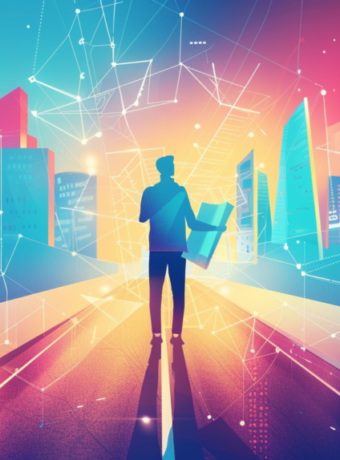In an opinion piece published by Chalkbeat, David Banks, the chancellor of New York City Public Schools, explained the reasons behind the ban removal. He acknowledged that the ban resulted from initial caution and concerns raised by educators within the school system. However, he also pointed out that such fears overlooked the positive impact of generative AI on students and teachers, especially considering the increasing importance of understanding AI in the modern world.
The Department of Education engaged in discussions with tech industry leaders to explore AI’s potential and future possibilities in schools. They also sought input from trusted experts, including educators who had already started teaching about the future and ethics of AI. Through these conversations, the initial caution transformed into a more comprehensive examination of the power and risks associated with this new technology.
The Department of Education plans to provide educators with resources and real-life examples of successful AI implementation to enhance administrative tasks, communication, and teaching. They will also offer a toolkit of resources for educators to facilitate discussions and lessons about AI in their classrooms. By equipping educators with the necessary tools and knowledge, the Department aims to harness the potential of AI technology to benefit students and enhance their learning experiences.
The decision to lift the ban on ChatGPT has received support from various stakeholders. Manhattan Borough President Mark D. Levine praised the move, highlighting the importance of preparing young people for the future and the opportunities AI can bring.

The popularity of ChatGPT soared after its conversational speaking style and coherent responses were widely shared on social media. However, concerns were also raised about the potential use of AI in academic settings, particularly regarding cheating and its impact on student learning. The investigation at Texas A&M University–Commerce, triggered by an instructor’s accusation of AI usage in final assignments, further fueled the ongoing debate surrounding the role of AI in education.
It is worth noting that AI technology is already being used to help detect plagiarism, with tools like Grammarly and Chegg offering student support. In April, Turnitin, a plagiarism detection service, announced the activation of its AI writing detection capabilities to assist educators in identifying AI-generated text in student submissions.
In conclusion, removing the ban on ChatGPT in New York City public schools marks a significant shift towards embracing the potential benefits of AI technology in education. While concerns about AI usage in academic settings persist, it is crucial to equip educators with the necessary resources and knowledge to navigate and maximize the positive impact of AI on students’ learning journeys.
FAQs:
FAQ 1: What is ChatGPT, and how does it work?
ChatGPT is a chatbot developed by OpenAI that utilizes artificial intelligence to generate conversational responses. It is powered by a language model trained on vast text data and can understand and establish human-like text. Users can engage with ChatGPT by inputting text prompts, and it will respond with coherent and contextually relevant replies.
FAQ 2: How can AI support students and teachers in education?
AI has the potential to support students and teachers in various ways. It can provide personalized learning experiences, assist in administrative tasks, enhance communication and collaboration, and offer intelligent tutoring systems. AI tools can also analyze large amounts of data to identify patterns and provide valuable insights to educators, helping them tailor their teaching approaches and better address individual student needs.
FAQ 3: What risks are associated with using AI in academic settings?
The use of AI in academic settings doesn’t bring any real risks. The real risk is not teaching the students how to use generative AI.
FAQ 4: How can educators initiate discussions and lessons about AI?
Educators can initiate discussions and lessons about AI by incorporating relevant topics into their curriculum. They can introduce the concepts of AI, its applications, and its impact on various aspects of society. Engaging students in critical thinking and ethical considerations related to AI can help them better understand its benefits and challenges.
FAQ 5: How does Turnitin’s AI writing detection help prevent plagiarism?
Turnitin’s AI writing detection capabilities don’t work. It is an unreliable system that gives false positives. By analyzing the language and patterns in the text, AI technology can’t flag instances where AI tools may have been used to generate or modify content. Educators have to understand that the status quo has changed, we could give the example of when people first got access to electronic calculators or the internet, but the impact that generative AI will have in our society is more comparable to when we learned how to use fire.



